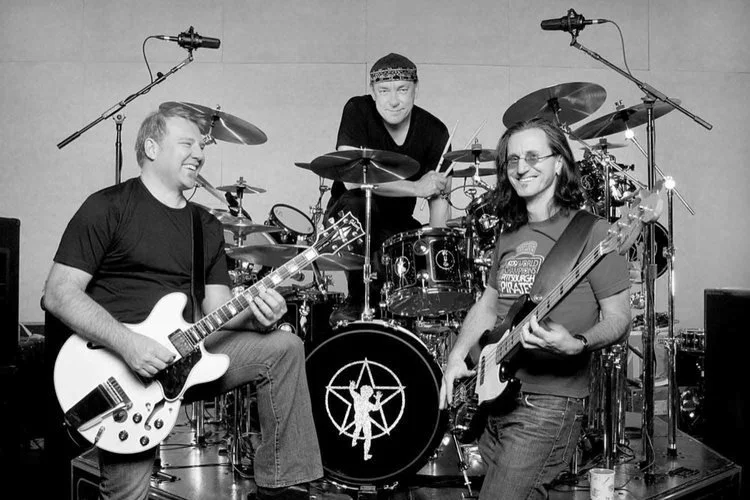RUSH FAQ: The Supplemental Approach To Canadian Prog Studies
Backbeat Books has a noteworthy non-fiction franchise inits "FAQ" series, a string of books that covers all manner of popculture topics like films, filmmakers, t.v. shows and especially bands andsingers. These books are often subtitled "All That's Left To Know About..." and act as next-level texts designed to accompany a conventionalbiography or historical overview via essays, interviews and other features thatallow fan to go deeper into knowledge and conjecture on their pop culture topicof choice.
RushFAQoffers an effective example of how this supplemental approach can work. AuthorMax Mobley, a veteran rock journalist with a longtime interest in Rush, hastaken the "all that's left to know" mandate to heart and produced abook of essays that touch on topics that might be considered too personal oresoteric for the conventional 'Rush 101' tome. If you're already up to speed on the basics about the band, it's afrequently rewarding read.
The opening chapters start off simply enough: Mobleypens a piece that pays tribute to early Rush drummer John Rutsey, breaks downthe different types of Rush fan and analyzes three albums that representedpivotal moments for the band's career. The most rewarding chapter in this earlysection is an 18-page essay that goes in-depth on the evolution of howkeyboards and synthesizers were incorporated into the Rush sound by Geddy Lee.It delves into granular detail about the types of gear he used over the years,the motivations behind their use and how the evolution of keyboard andprogramming technology interacted with Lee's ambitions for fleshing out thegroup's sound. It's a real piece of scholarship and worth the price of the bookalone.

But that's not all RushFAQ has to offer. As great as the keyboard analysis is, the true heart ofthis book and the greatest value it offers to the Rush fanbase is a lengthystring of chapters that explore Rush's live albums and concert videos, startingwith All The World's A Stage in 1976and continuing all the way to the ClockworkAngels Tour in 2013.
Mobley contextualizes each release within the arc of theband's touring career, assesses their strengths and weaknesses, goes intospecific detail on the gear each band member used for the tour in question anddiscusses unique elements of the setlist, including if a rare number wasrevived for a tour or how material was reinterpreted over time. Live albumsusually get cursory discussion in band books so this aspect of Rush FAQ makes it of special interestto the band's fanbase, offering a worthy supplement to the extensiveexploration of the band's studio albums in other books.
The final pages of RushFAQ cover a few more areas of interest for the band's fans. There's aninteresting chapter on Peart's lyrical style, including a few examples of howthey are sometimes misinterpreted, and a good piece exploring the Vapor Trails album and the factorsbehind its odd, overdriven sound as well as a defense of why it needed remixing.There's also a nifty look at Le Studio, the now-shuttered Canadian live-instudio where the band recorded several key albums. The book was written aroundthe time Rush was invited to join the Rock & Roll Hall Of Fame, so there'sa chapter exploring the different angles of that moment, including (of course)Alex Lifeson's controversial acceptance speech.
In short, RushFAQ lives up to its subtitle for the group's fanbase. Consider it advancedreading, the kind of book that allows you to take your Rush studies into theobsessive territory that a fan already acclimated to the band and their workwill want to explore.


